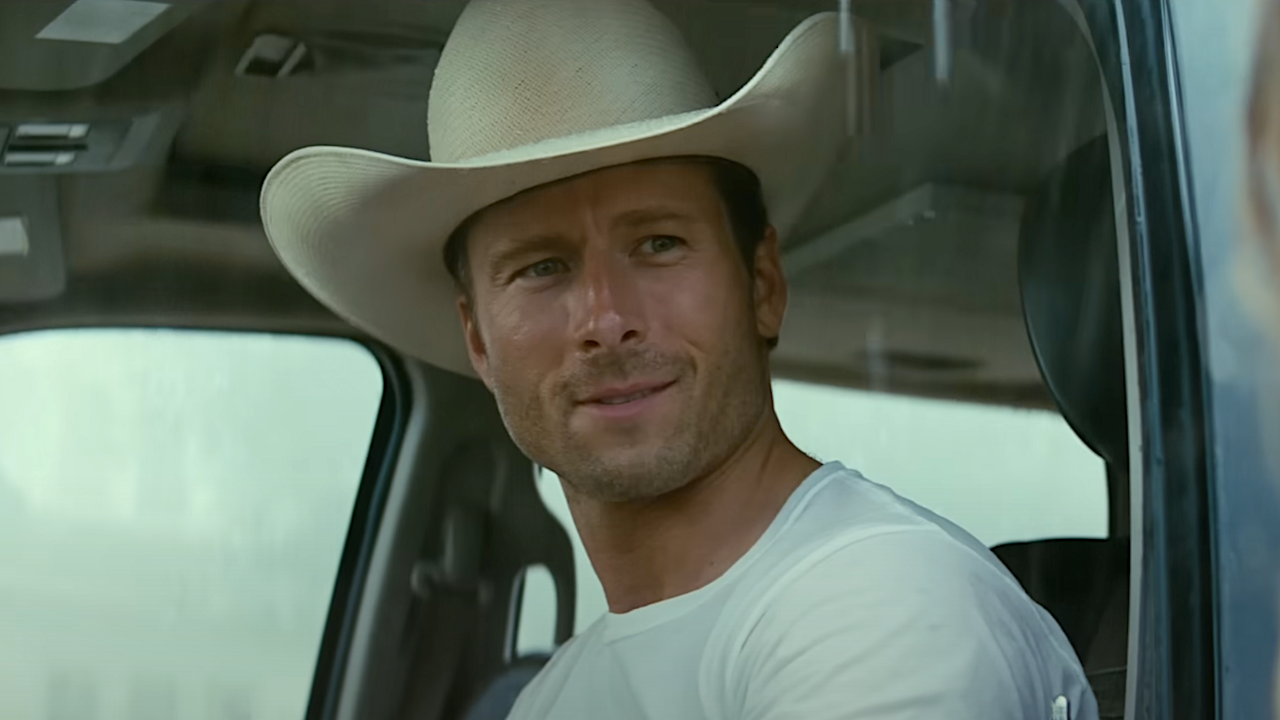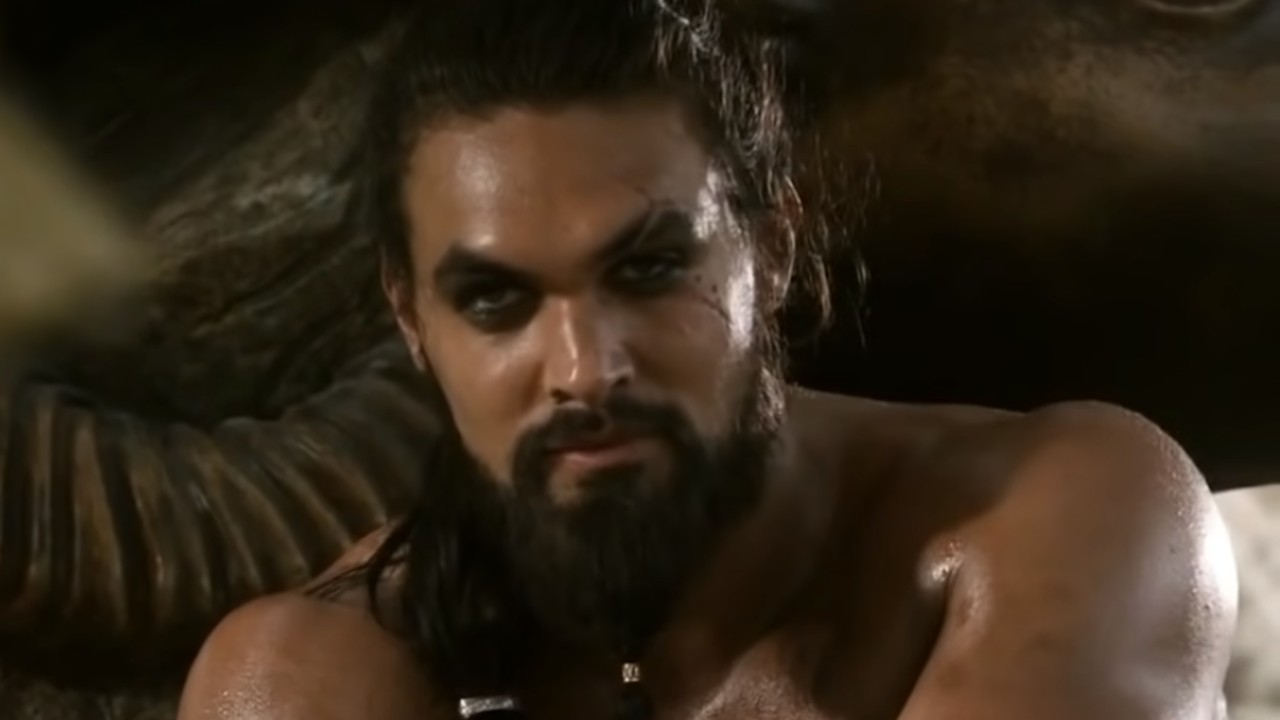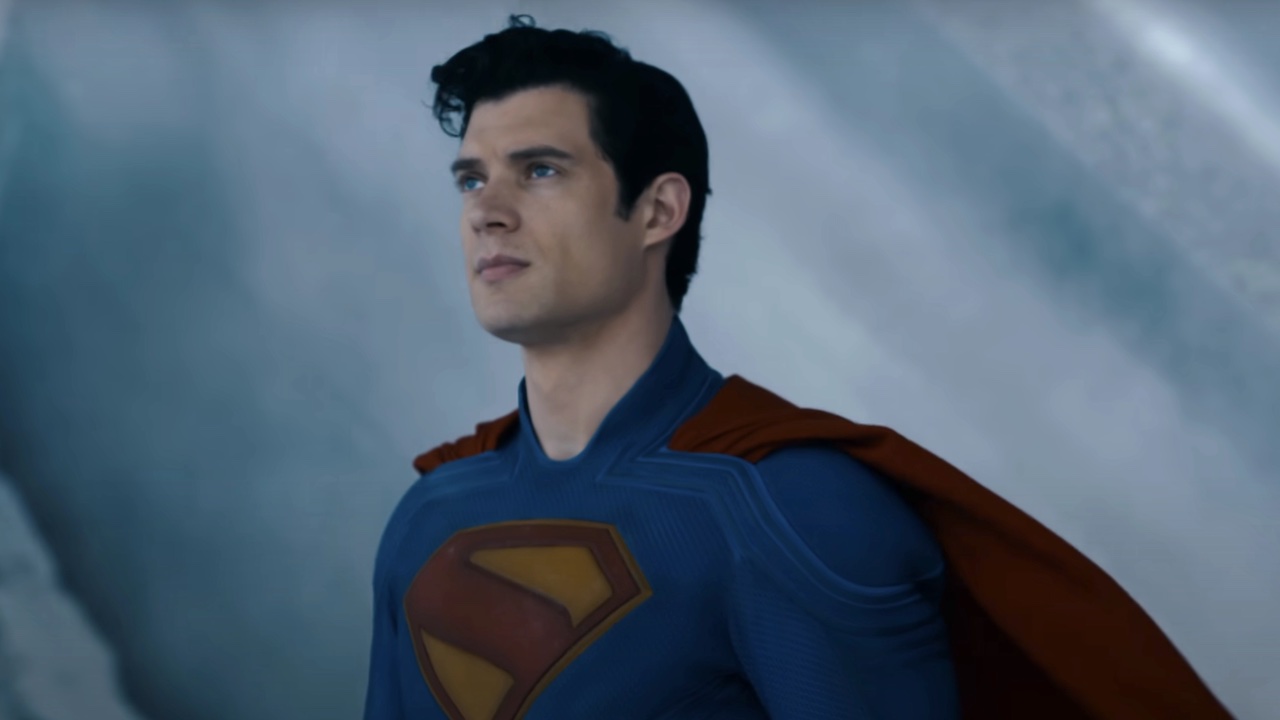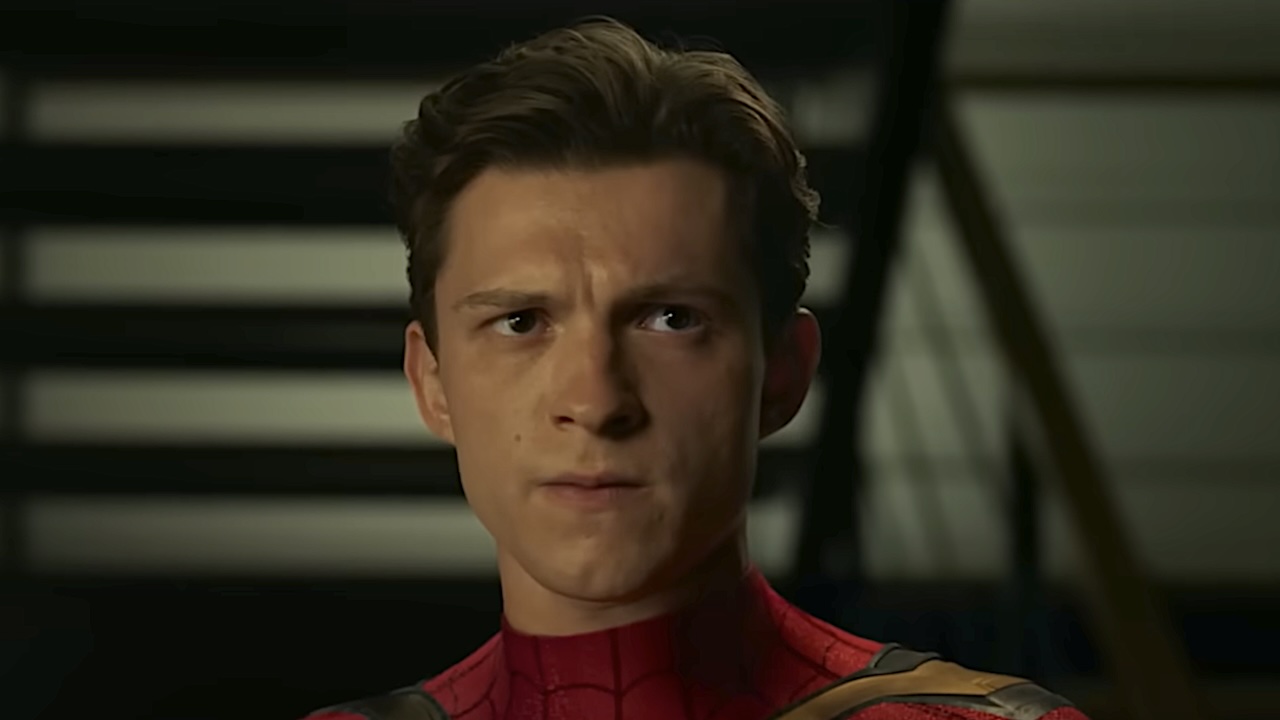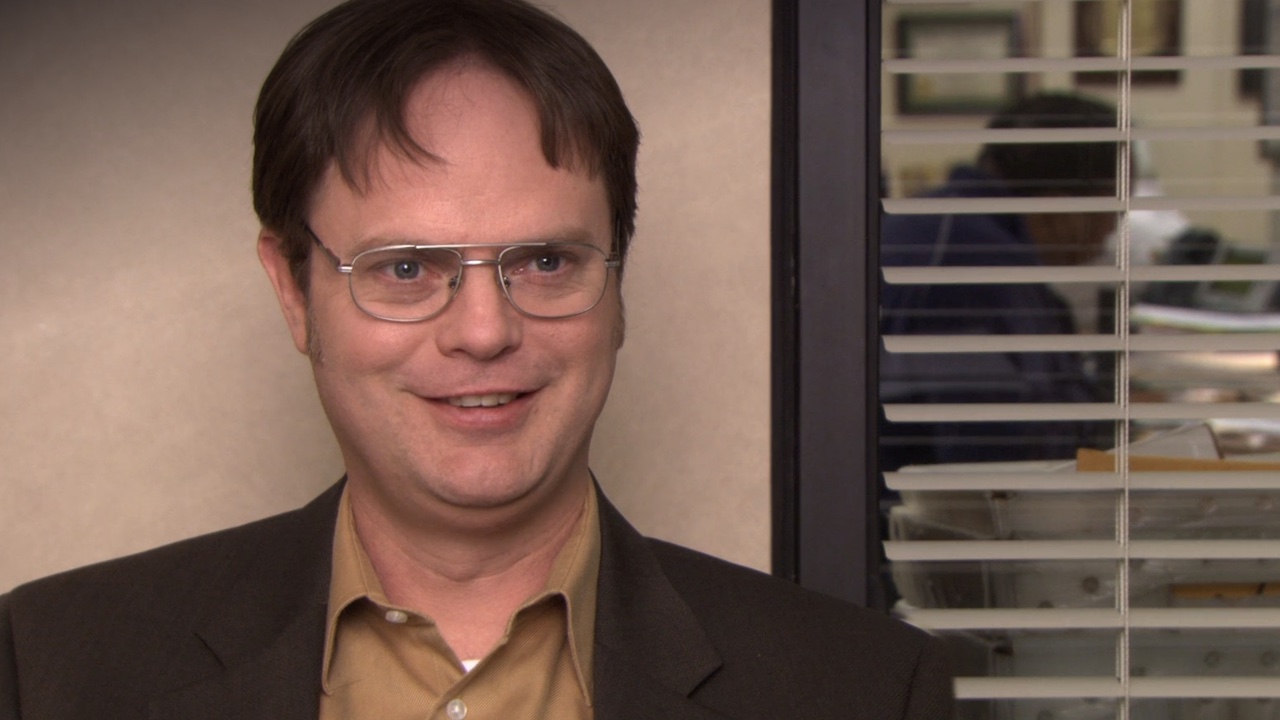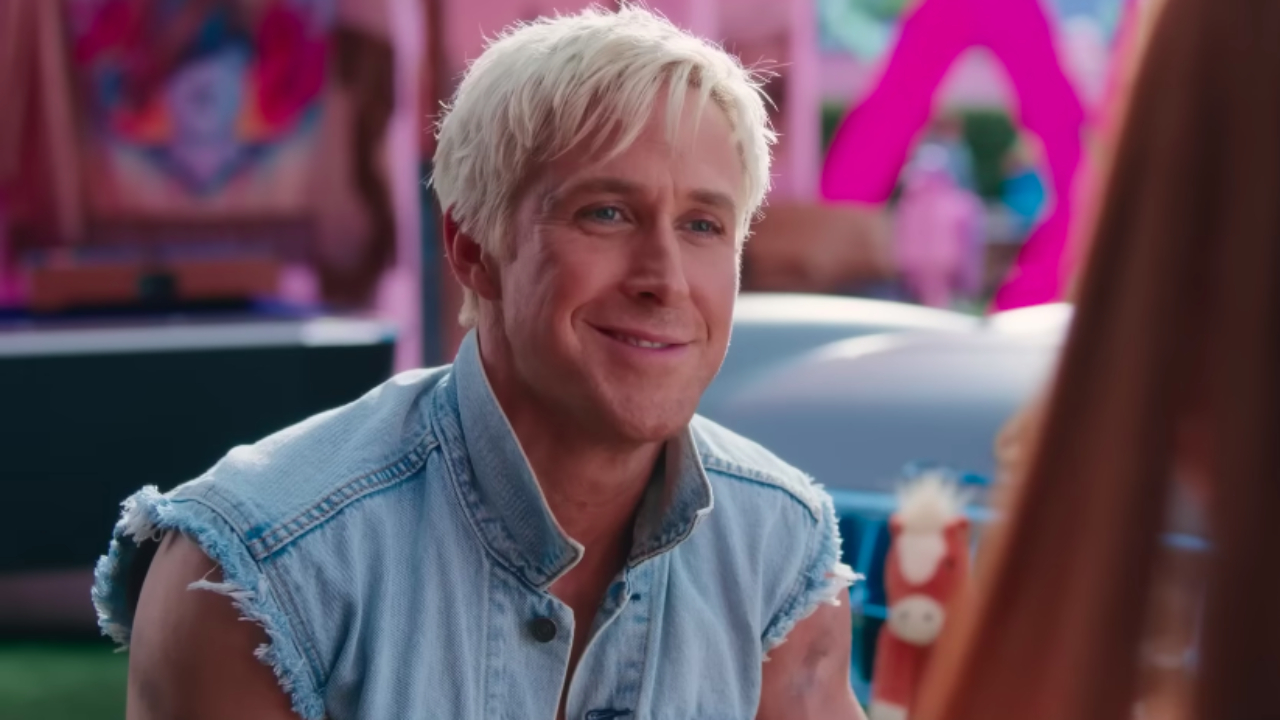Ron Perlman Talks Selling Monster Organs And Reuniting With del Toro On The Set Of Pacific Rim
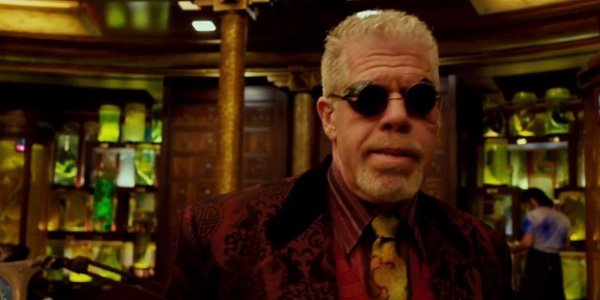
Ron Perlman and director Guillermo del Toro have quite the history together. The duo first united on the filmmaker’s 1993 debut Cronos, and have remained tight ever since. They reunited for the first time in 2002 when del Toro made his first comic book movie, Blade II, and Perlman became a leading man when they worked together on both Hellboy and Hellboy II: The Golden Army.
But with Pacific Rim they are heading into whole new territory. In the epic sci-fi movie Perlman plays Hannibal Chow, a black market dealer who gets monster organs and parts from the government and sells them through underground channels. But why should I explain it when he is the expert?
As I reported yesterday, last year I flew up to Pinewood Studios in Toronto, Canada with a couple other journalists to visit the set of the upcoming summer blockbuster, and between touring the soundstages and watching the crew film Perlman was kind enough to spend some time talking with us. Decked out in full costume – which included gold-plated shoes, a maroon shirt, multiple tattoos and a gnarly facial scar, Perlman discussed the inside outs of both his latest character and his history with the director. Check it out!
Did you have to be in Sons of Anarchy to get this job?
Yes [laughs].
Because there’s a few of you...
It seems as though everything works for a reason, so I’ll just say “yes” to everything… as long as it’s a yes or no question [laughs].
CINEMABLEND NEWSLETTER
Your Daily Blend of Entertainment News
You obviously have a great relationship with Guillermo del Toro. Can you talk a little bit about when he presented you with this project and asked you to be involved?
I’m not exactly sure of the sequence of events with regard to this, but I actually think this character was designed to be played by another ethnicity other than myself. And somewhere along the way, he had the notion, “Wouldn’t it be interesting to turn this guy into more of an invention.” So, in other words, somebody takes on a persona that completely sounds like he’s someone else and acts like he’s someone else but he’s really, you know, as you see me. That added a dimension to the larger-than-life aspect of the character. And he ran it by the studio, and miraculously, they agreed.
Are you doing an accent in the film?
No. I’m playing somebody very close to my own origins. But a completely made-up persona… which makes him even more full of shit [laughs]. And I think that’s the charm of the guy—that he’s kind of elusive, hard to pin down.
Can you talk a little bit about the look of the character—the tattoos, the ring, the scar on the face—and how that feeds into your performance and how it reflects the character.
Well, clearly he’s someone who’s concerned with the things he’s been able to accumulate. He’s a bit of a collector in the film. He’s a collector of endangered species, so he likes to surround himself with exotic accoutrements and adorns himself fittingly for his large appetites to enjoy the finer things.
One thing I think we’ve all been blown away by is the amount of practical sets; the director seemed to base everything around a practical set or element before amplifying it with CGI. What was your reaction walking onto these sound stages, seeing some of these things they built?
That’s always been Guillermo’s preference to have as much there practically as is humanly possible, and that digital graphic images are more a punctuation mark than they are a replacement. He enhances the reality with these things that are juxtaposed against it, rather than replacing reality completely. But there’s always a real base, no matter how fantastical the image is that ultimately ends up on screen. And I really believe that he philosophically thinks that that engages the viewer to a greater degree, when there’s more things there that are actually there. I, for one, am not nearly as engaged when I’m looking at something that’s been completely drawn up on a computer that replaces anything that’s in real time and real space. It just engages me all the less, rather than all the more. And I learned from my many times working with Guillermo that that’s his preference, and he’ll always opt for that. So I’m not surprised to see the scope of these sets. I know, in reading the script, that one expects a futuristic world that’s rather formidable and is attacked by something that’s even more formidable than the scope of the world itself, so therein lies the conflict of this particular story.
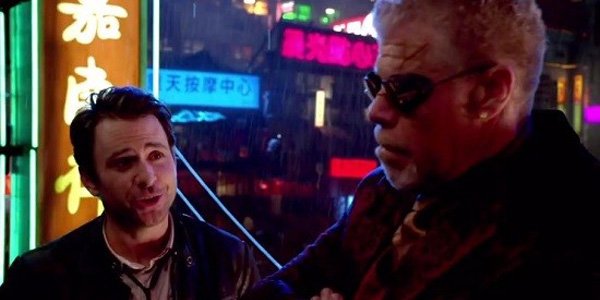
Is this time working with Guillermo del Toro different in any particular way, and from your perspective, was it nice not to be covered head-to-toe in red makeup?
It’s always nice not to be covered in red makeup no matter who I’m working with [laughs]. No, the great thing about working with Guillermo is that, even though there’s this phenomenal history between us, no two projects are the same. It’s always a completely different exercise, it’s always a completely different lens that the material is being viewed through. He seems to adapt his visual sensibility to the material and tailor it; so the style he’s shooting this film is very different from the style in which he shot the Hellboy films, and I’m sure whatever he shoots next will be [different as well]. It’s fascinating to watch.
I’ve always kind of put him on a rather lofty pedestal in terms of his magnanimity as an artist. I believe that of all the people I’ve been fortunate to brush up against in my years in this business, he’s probably the closest to Leonardo da Vinci. Because he’s that inventive, he’s that inclusive of everything from the skeletal origins of things to all the facets of evolution that something currently exists and the possibilities of what would happen if they were allowed to completely evolve in some sort of warp-time reality. If you’ve ever looked through his notebooks, his notes on how he prepares mentally and visually for the story he’s about to tell on the screen, you too would probably agree that he’s the closest thing you’ve ever seen to Leonardo da Vinci. And also, I’ve never met anyone who has the output that he has. The amount of things that are exploding out of him in a 24-hour time period is truly humbling. I don’t know anyone that has the output of Guillermo del Toro.
You mean in terms of ideas?
In terms of not only ideas, but putting them into actual… like, y’know, the writing of the trilogy The Strain? I didn’t know he was doing that while he was doing two Hellboy movies. I know how engaged he was in the two Hellboy movies; it didn’t seem like there was time for him to be writing a 900-page volume one of three, which I ended up doing the audiobook to; that’s the only reason I found out that he had written this thing. I said, “Well, Jesus, when did you have time to do that? Did you have a particularly advanced state of diarrhea that kept you in the bathroom for a while? Because I’ve been with you most of the time, and I don’t see you writing no book, much less 900 pages.” So, I feel like a complete slacker when I’m in his presence; that’s the one thing I hate about working with him.
It can be an inspiration.
Yeah, it hasn’t rubbed off.
We got to see you shooting with Charlie Day in the Hong Kong ruins. Could you talk about what was going on in that scene?
Well, I’m a kind of a black market… I’ve established a contract with the guys that I have the rights to all Kaiju parts after they’ve taken them down and after they’ve taken what they need from them scientifically. So I’m selling Kaiju parts to strange, twisted collectors in the world who are willing to buy these exotic organs and skin samplings and fingernails and eyeballs and stuff; and I’m doing quite well doing that. So my relationship with our heroes in the film is quite convenient and quite profitable for me. This sequence that you’re watching us shoot now is the latest result of this battle between our robotic soldiers and these [Kaiju] creatures. And two Kaijus have fallen and I’m gathering their remains for profit.
How did you get that scar on your face in the backstory of this film?
You know, I’m not really sure, but I’m pretty sure it had to do with a Kaiju. It’s never explained; it’s just kind of inferred that you don’t want to get too close, because this is what can happen if you’re not careful.
So, are you part of the scalper group or are you buying off the government people after they’re done with the stuff?
Yeah. I’m the guy. I have the sole contract for first dibs—the right of first refusal—on the fallen Kaiju.
We were told earlier that various parts of the Kaiju are used for holistic medicine and I think bones are kind of used for a potency kind of thing. Is that something your character actually believes in or is he just hocking that stuff?
No, it’s for real. There’s no part of the Kaiju that Hannibal Chow has not figured out how to profiteer from. And when we find out that Kaiju bone powder is even more effective than Viagra—or Cialis—imagine his glee. He can’t wait for the next Kaiju to fall.
Does your character appear throughout the film or do you have more prominence in the second act or the beginning of the third act?
I’m not sure of the act breakdowns, but I don’t show up until pretty late in the story. And I really emerge out of Charlie Day’s character’s notion that, if he were able to have a freshly killed Kaiju to study, that he might be able to learn something about their patterns that would give our heroes the edge in terms of eradicating them. So he seeks me out and tries to hang out with me so he has access to these freshly killed, non-ruined Kaiju organs—brains, hearts, vital organs. That’s how I come into the piece; and it’s pretty late in the piece, probably toward the end of Act 2, beginning of Act 3, as things are beginning to become more and more dire.

If I’m not mistaken, we saw some pictures of your lab, and it seems like that set-up was very detailed. Could you talk a little bit about your “lair,” what’s in it and what impressed you about it?
Well, it’s the great mind of Guillermo del Toro at work. Because it has these huge jars that he’s fascinated with; I’ve seen them ever since we did Blade II together, which is about four movies ago. There’s always a set like that—where this exotic thing, which is the subject of his fascination in this particular piece, is dissected and separated out and explored; the nature of it is explored in a very nerdy, geeky, scientific-y, but collectible-y kind of way, which are all the things that Guillermo del Toro fashions himself to be. Not particularly in that order, but if you ask him, he says, “I’m a geek, I’m a nerd and I’m a collector.” So I think he always has a set in his movies—especially if the subject matter is as exotic as the Kaiju—that is reminiscent of what we saw in Hannibal Chow’s lair. And Hannibal Chow is the embodiment of somebody who separates this stuff out; but for him, it’s for profit, it’s not for scientific curiosity. Whereas in other del Toro pieces, sometimes it’s for scientific study; sometimes it’s just as a reminder, as a cautionary tale against what can happen when we let certain technologies run amok or if we allow for the evolutionary process to give way to things that are beyond our understanding. Which is actually, I guess, the nature of sci-fi, and why we make movies that are about the fantastical.
I’m told there are some animatronic creatures and stuff in your lair, like pieces of Kaiju creatures… what was it like to work with that stuff?
Yeah, there’s a lot of moving parts, things that are freshly unmoving. When you arrive on a set like that to actually put in a day’s work, the first half-hour of it is kind of like an amusement park; it’s the same feeling you have when you enter Disney Land or whatever amusement park floats your boat. Because you’re just looking around, going, “Oh, wow! Look at that.” You know? And you’re walking around with your buddies, and you just spend most of the time in admiration of whatever sick, weird, twisted, crazy imagination put all that stuff together on a massive scale. I mean, if you were in the Chow lair, it’s massive; it just doesn’t end. Just when you get finished looking at every body part you think can exist in a Kaiju, you find out you’re only in the first of 100 rooms. And then you actually say, “Ok, now we have to shoot this scene; it’s time to stop enjoying myself so much and start getting nervous.”
Obviously there is the large practical element that Guillermo loves to do, but with regard to the CGI, after you’ve acted against these CGI elements, are you as curious as we are to see what the final cut is going to look like?
Yes. Yes, because, you know, you talk about a front-row seat—we as actors are doing this probably a year before all these effects are going to go in. So we’re having to imagine what that’s going to end up looking like so we can react to it with some kind of verisimilitude, some vague, hopeful truth. So it’s always interesting to see how wrong you were, how far off you were, how you’re looking in the wrong place when things are over here, hoping that they can fix that. But these are the times we live in. When I started, Steve Jobs wasn’t born; well, he was born but… there were no cell phones or computers and if you couldn’t build it, it wasn’t there.
Your character obviously benefits from selling the various pieces of the Kaiju, and it seems like the heroes have some kind of science they’re trying to test out to destroy these creatures. Would your character be against that happening, given that he makes his living off of them?
Well, I actually thought about that. I thought, “Should I discuss this with Guillermo as my sort of big overview?” Because, how do I feel about this scientist coming in and presenting himself as someone who can put an end to all these things? I decided, “No, I think I’ll let this remain my own private little secret.” But hopefully it’ll play out in terms of my attitude toward the scientist and this little secret that I know that, “No matter what you do, you’re never going to stop these guys; I’m going to be in business for a long time. I’ll indulge you, but better men than you have tried to stop these things.” Since it’s my secret and I’m telling you, I’m sure you’re not going to tell anyone. How big is your readership?
We have at least five readers between us.
Oh, well then my secrets are all safe with you guys.
Was there an aspect in Hannibal’s personality or look or the way he talks or moves that wasn’t in the script, that you brought to the role?
Well, the first day we worked on a Hannibal scene, which was about two weeks ago, Guillermo was communicating to me a set of things that I should be thinking about, because there’s a theatricality to this guy. And so, I came in trying all these things that he thought about. And then he saw them and said, “No, they suck.” And little by little, together—he would say, “try this and try this and try this…”—finally, something began to click with the guy which kind of answered all of the notions that he originally had about this guy’s theatricality.
He’s definitely big. And it’s scary to play big. Because if you’re wrong, and you start going over the edge, you really look like an idiot. But once we arrived at it, he was really delighted and I was really delighted, and it was nothing that either of us had planned. It came as a result of this back-and-forth, kind of set of ideas that we were just [snaps fingers] going for stuff. And it felt phenomenal, because this is such a personal character for him, especially him convincing the guys who are writing the checks to let me be the guy that plays this character. It was really important that we come up with something that delighted him. And he seems very happy with who this guy is. He’s not in the movie very much; I don’t want to give too much away, but now you see him, now you don’t. The impact that he makes has got to be fast and then gone. But he’s quite a delicious invention. Of all the collaborations I’ve had with Guillermo—and they’ve all been phenomenal—this guy almost has now gone to the head of the class.

Eric Eisenberg is the Assistant Managing Editor at CinemaBlend. After graduating Boston University and earning a bachelor’s degree in journalism, he took a part-time job as a staff writer for CinemaBlend, and after six months was offered the opportunity to move to Los Angeles and take on a newly created West Coast Editor position. Over a decade later, he's continuing to advance his interests and expertise. In addition to conducting filmmaker interviews and contributing to the news and feature content of the site, Eric also oversees the Movie Reviews section, writes the the weekend box office report (published Sundays), and is the site's resident Stephen King expert. He has two King-related columns.

